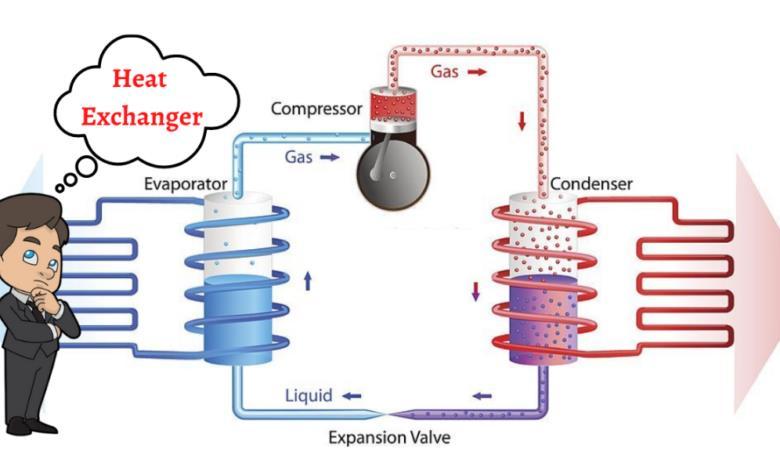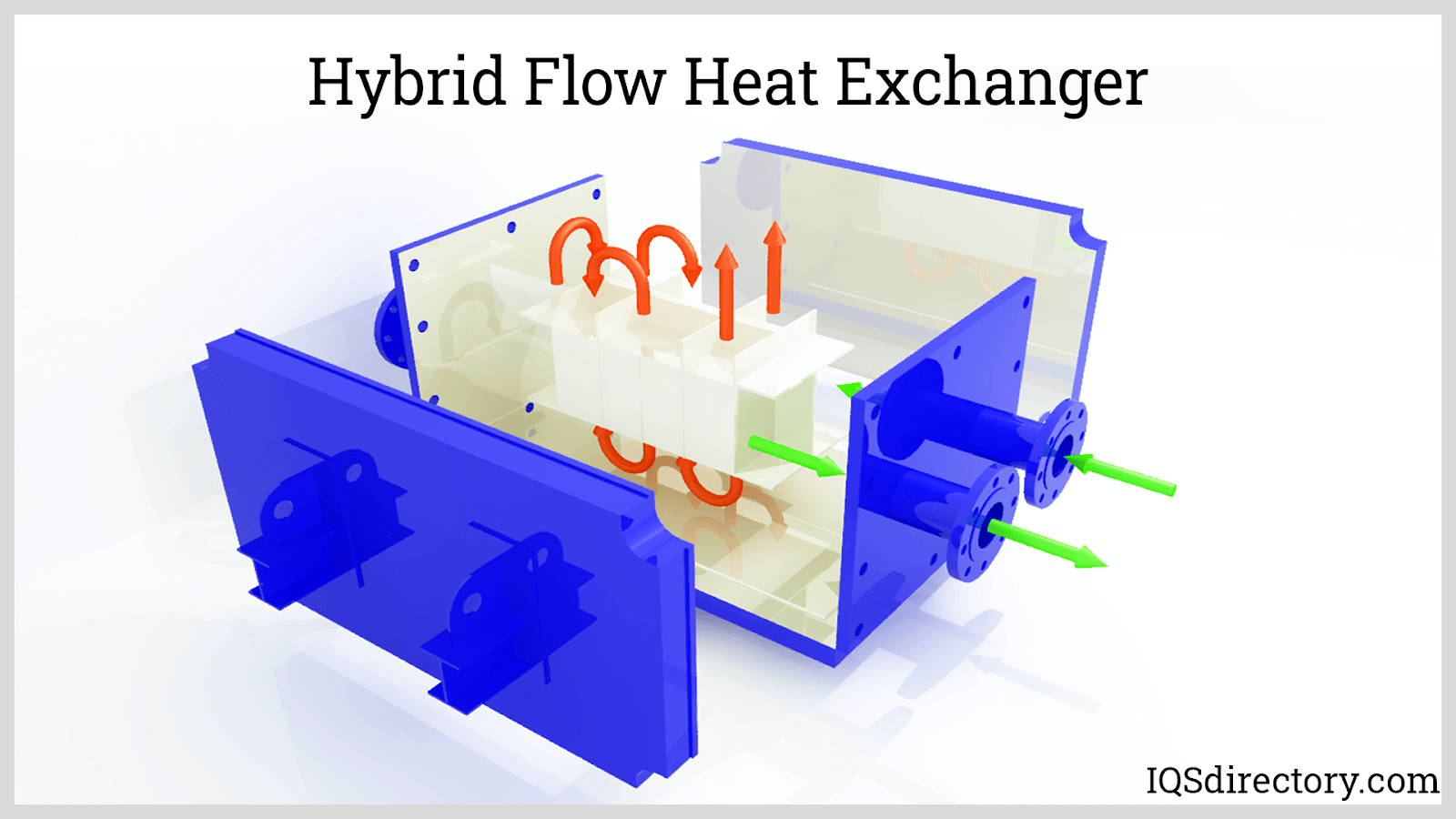Technologies in Heat Transfer Solutions: What You Required to Know for Optimum Performance
Advancements in Heat transfer systems are transforming performance across numerous industries. Advanced products like graphene and nanofluids guarantee substantial renovations in thermal conductivity. The assimilation of IoT and device learning uses possibilities for real-time monitoring and boosted power efficiency. The landscape of thermal monitoring is rapidly progressing. Recognizing these advancements is important for attaining ideal system performance and sustainability in the future. What details innovations are shaping this improvement?
Arising Products for Improved Heat Transfer

Advanced Heat Exchanger Layouts
While standard Heat exchangers have offered their purpose in various applications, progressed designs are now emerging to satisfy the enhancing needs for effectiveness and efficiency. These innovative layouts, such as plate, shell-and-tube, and finned-tube Heat exchangers, include boosted surface locations and boosted circulation patterns to boost thermal transfer prices. Furthermore, portable designs permit reduced room needs without jeopardizing effectiveness. Advanced materials, such as compounds and corrosion-resistant alloys, additionally enhance sturdiness and efficiency under extreme problems. Simulation modern technologies and computational liquid dynamics are progressively utilized to fine-tune these layouts, making certain peak Heat transfer characteristics. As sectors seek to minimize power usage and make best use of outcome, the adoption of sophisticated Heat exchanger layouts is essential in attaining these objectives.
The Duty of Nanotechnology in Heat Transfer
Nanotechnology plays a necessary function in enhancing thermal conductivity within Heat transfer systems. By manipulating products at the nanoscale, scientists have actually achieved significant enhancements in energy efficiency. These innovations not only enhance performance but additionally add to even more lasting power solutions.
Improved Thermal Conductivity
Considerable improvements in thermal conductivity have emerged through the application of nanotechnology, reinventing Heat transfer systems throughout different industries. By incorporating nanoparticles into Heat transfer liquids and materials, scientists have actually achieved amazing increases in thermal conductivity. These nanoparticles, such as carbon nanotubes, graphene, and metal oxides, improve the Heat transfer buildings because of their high surface and one-of-a-kind thermal qualities. The resulting composites exhibit boosted efficiency in applications ranging from electronic devices cooling systems to eco-friendly power innovations. Moreover, the capability to customize the dimension, form, and composition of nanoparticles enables for optimized thermal management options. Because of this, nanotechnology continues to play a pivotal function in the advancement of much more effective and reliable Heat transfer systems, paving the way for improved industrial applications.
Energy Effectiveness Improvements

Assimilation of IoT in Heat Transfer Equipments
The combination of IoT in Heat transfer systems presents the execution of smart sensing units that improve functional efficiency. These sensors enable real-time data monitoring, enabling for link instant modifications and optimizations. This technical development has the potential to considerably boost performance and power monitoring in Heat transfer applications.
Smart Sensors Execution
As Heat transfer systems evolve, the combination of smart sensing have a peek at these guys units through the Web of Things (IoT) has arised as a transformative strategy. These sensing units enable real-time monitoring of circulation, temperature, and stress prices, enhancing system performance and dependability. By collecting and sending data, they promote positive upkeep, lowering the risk of system failings. Additionally, wise sensors add to energy cost savings by refining functional specifications based on environmental conditions. Their ability to assess patterns and anomalies enables notified decision-making, making certain peak performance of Heat transfer systems. As sectors significantly adopt this technology, the execution of smart sensors stands to change how Heat transfer systems are handled, leading the way for higher sustainability and improved efficiency results.
Real-Time Data Monitoring
Just how can real-time data keeping track of boost the efficiency of Heat transfer systems? By integrating Net of Things (IoT) technology, Heat transfer systems can utilize continuous data collection from clever sensing units. This real-time surveillance permits for prompt analysis of flow, pressure, and temperature level rates, making it possible for drivers to determine ineffectiveness promptly. As a result, adjustments can be made to optimize efficiency, reduce energy intake, and extend devices lifespan. In addition, anticipating upkeep can be applied, decreasing unanticipated downtime and expensive fixings. The ability to imagine efficiency metrics with dashboards enhances decision-making, fostering a proactive technique to system administration. Eventually, real-time information keeping an eye on not just boosts functional effectiveness yet additionally adds to sustainability goals within industrial procedures.
Power Performance and Sustainability Trends
Energy efficiency and sustainability patterns are improving the landscape of Heat transfer systems, driving technology and compliance throughout various sectors. Organizations are progressively focusing on energy-efficient designs to lower functional prices and decrease ecological influences. The integration of renewable resource sources is ending up being a lot more prevalent, making it possible for Heat transfer systems to run sustainably while fulfilling regulative demands. Furthermore, advancements in products and modern technologies promote lower energy consumption and improve total performance. Lifecycle assessments are also getting traction, permitting companies to review the ecological influence of Heat transfer systems from production to disposal. This emphasis on sustainability not only sustains corporate responsibility yet likewise positions companies competitively in a market where customers increasingly prefer environment-friendly services. Power effectiveness and sustainability stay essential factors to consider for future advancements in Heat transfer innovation.
Developments in Thermal Management Solutions
While the need for reliable Heat transfer remains to climb, developments in thermal administration solutions are emerging to resolve both performance and sustainability challenges. Advanced materials, such as phase modification products and nanofluids, are being created to boost Heat transfer performance - DVS Heat Transfer Systems. These materials enhance thermal conductivity and permit better temperature policy in various applications. In addition, technologies like energetic thermal control systems are obtaining grip, enabling real-time adjustments to manage Heat flow effectively. These systems add to energy cost savings and lower the check that ecological impact of thermal procedures. The integration of IoT in thermal management facilitates monitoring and predictive upkeep, guaranteeing maximized efficiency and long life of Heat transfer systems. On the whole, these developments represent considerable strides toward even more lasting thermal monitoring methods
Future Instructions in Heat Transfer Technology
Emerging innovations in thermal monitoring services indicate a promising future for Heat transfer technology. Scientists are progressively concentrating on establishing materials with remarkable thermal conductivity and boosted energy efficiency. Innovations such as nanofluids, which include suspended nanoparticles, use substantial enhancements in Heat transfer performance. Furthermore, the assimilation of wise materials that adapt to differing temperature conditions is obtaining traction, permitting more efficient and responsive systems. The rise of additive production techniques is additionally allowing the design of complicated Heat exchanger geometries that maximize fluid flow. The application of machine learning algorithms is prepared for to reinvent the optimization of Heat transfer systems, assisting in predictive upkeep and efficiency enhancement. Jointly, these developments are poised to transform the landscape of Heat transfer technologies in numerous sectors.

Regularly Asked Inquiries

How Do I Select the Right Heat Transfer System for My Application?
Picking the best Heat transfer system entails assessing application requirements, including temperature ranges, liquid buildings, and effectiveness demands. Evaluating system types, upkeep considerations, and cost-effectiveness likewise plays an essential duty in making an informed decision.
What Are the Upkeep Needs for Advanced Heat Exchangers?
Upkeep needs for sophisticated Heat exchangers normally consist of regular examinations, checking for leakages, cleaning of surface areas, and ensuring excellent flow rates. Sticking to maker guidelines warranties reliable procedure and lengthens the devices's life-span.
Exactly How Do Environmental Factors Affect Heat Transfer Efficiency?
Environmental elements considerably affect Heat transfer performance. Variants in humidity, air flow, and temperature level effect thermal conductivity and convective Heat transfer, inevitably impacting system performance and demanding factor to consider throughout the design and procedure of Heat transfer systems.
What Safety And Security Requirements Relate To Heat Transfer Systems?
Security standards for Heat transfer systems usually consist of standards from organizations such as ASME and ASTM. DVS Heat Transfer Systems. These requirements address products, design, and functional techniques to guarantee integrity, performance, and protection against risks in numerous applications
How Can I Repair Usual Heat Transfer System Issues?
Fixing typical Heat transfer system concerns entails looking for leaks, ensuring proper liquid flow, inspecting insulation honesty, and confirming temperature level differentials. Determining these variables can aid maintain system efficiency and stop further complications.
Nanotechnology plays a vital duty in improving thermal conductivity within Heat transfer systems. Substantial improvements in thermal conductivity have actually emerged with the application of nanotechnology, reinventing Heat transfer systems across numerous markets. Innovations in thermal conductivity with nanotechnology have actually paved the way for amazing improvements in energy performance within Heat transfer systems. Power effectiveness and sustainability patterns are improving the landscape of Heat transfer systems, driving advancement and conformity across various markets. The combination of IoT in thermal administration assists in monitoring and anticipating upkeep, ensuring optimized efficiency and long life of Heat transfer systems.